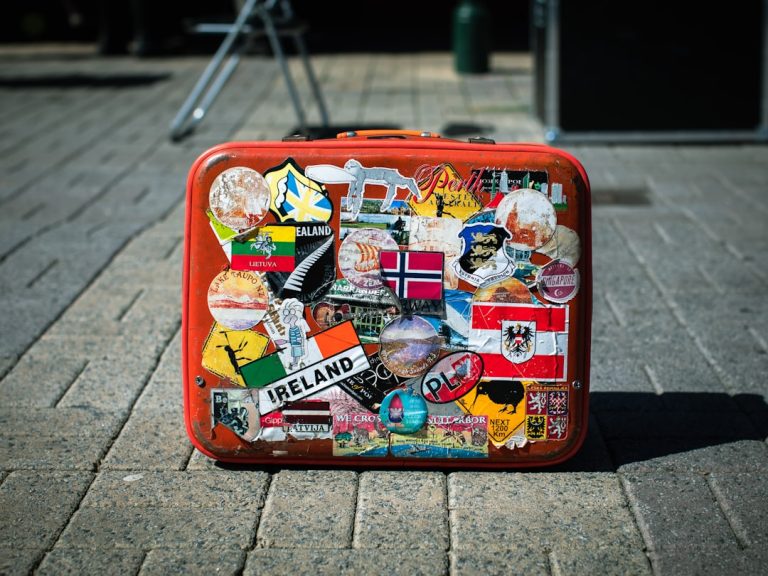The Best Practices for Donating and Reselling Unwanted Items.
The Best Practices for Donating and Reselling Unwanted Items
In a world increasingly focused on conscious consumption and sustainable living, the way we handle our unwanted possessions has taken on new importance. Beyond simply decluttering our homes, thoughtfully deciding whether to donate or resell items can make a significant difference—both for our wallets and the planet. This isn’t just about getting rid of stuff; it’s about embracing a circular economy, supporting communities, and making informed choices that benefit everyone involved. Mastering these best practices ensures your pre-loved goods find new life, rather than ending up in a landfill.
Beyond the Bin: The Initial Assessment for Your Unwanted Possessions
Before you even think about where an item will go, the crucial first step is a thorough and honest assessment. This initial phase dictates whether an item is suitable for donation, ripe for resale, or, unfortunately, destined for disposal. Approaching this systematically will save you time, effort, and potential disappointment down the line.
The ‘Keep, Donate, Sell, Discard’ Framework
Adopt a structured approach to decluttering. As you go through your belongings, categorize each item into one of four buckets:
- Keep: Items you genuinely use, love, or need.
- Donate: Items in good, usable condition that could benefit someone else.
- Sell: Items with discernible market value that are in excellent or very good condition.
- Discard: Items that are broken, stained, expired, or otherwise unusable and beyond repair or cleaning.
This framework provides clarity and helps prevent decision fatigue. Remember, the goal is not just to empty your space, but to rehome items responsibly.
Condition is King: Assessing Item Readiness
The condition of an item is perhaps the single most important factor in determining its next destination. For both donating and reselling, the mantra is simple: if you wouldn’t buy it, don’t expect someone else to.
- For Donation: Items should be clean, functional, and free from major damage, stains, or missing parts. Think of it as passing on something you’d be happy to receive yourself. Many charities spend valuable resources sorting through unusable items, which detracts from their mission.
- For Resale: Condition directly impacts price. “New with tags” (NWT) or “like new” items fetch the highest prices. “Very good” condition means minimal signs of wear. “Good” condition implies minor flaws that don’t affect functionality, which should always be disclosed. Anything less is generally not worth the effort of reselling, unless it’s a rare collectible or antique.
Researching Demand: What’s Hot and What’s Not?
Before committing to reselling, a quick market check can reveal an item’s true potential. What sells well depends heavily on trends, seasonality, and the item’s uniqueness.

- Online Marketplaces: Browse platforms like eBay (check “Sold Listings”), Poshmark, or Facebook Marketplace to see what similar items have sold for recently. This provides realistic pricing expectations.
- Local Demand: For larger items like furniture, consider local interest. Does your community have active buy-and-sell groups?
- Seasonal Considerations: Winter coats sell better in autumn, patio furniture in spring. Timing your listings can significantly impact sale speed and price.
Maximizing Your Impact: Strategic Donation for Meaningful Giving
Donating your unwanted items is a powerful way to give back to the community and extend the lifecycle of goods. However, to truly maximize your impact, a strategic approach is essential. It’s not just about dropping off bags; it’s about choosing the right recipient and preparing your items thoughtfully.
Aligning with Causes: Choosing the Right Charitable Partner
Not all charities accept all items, and some specialize in specific types of donations. Researching and choosing the right organization ensures your items go to those who need them most and align with your values.
- General Thrift Stores: Organizations like Goodwill Industries International or The Salvation Army accept a wide range of items, from clothing and household goods to furniture. They often use sales revenue to fund job training and community programs.
- Specific Charities:
- Homeless Shelters/Women’s Shelters: Often need professional clothing, toiletries, and children’s items.
- Animal Shelters: Can use old towels, blankets, and pet supplies.
- Libraries/Schools: May accept books, educational games, and art supplies.
- Local Food Banks: Beyond food, some accept hygiene products or baby items.
- Habitat for Humanity ReStore: Accepts building materials, appliances, and furniture to support affordable housing initiatives. Find a ReStore near you.
Always check their website or call ahead to confirm accepted items and current needs. This saves you a wasted trip and ensures your donation is genuinely useful.
Understanding Tax Deductions for Donated Goods
For many, the ability to claim a tax deduction is an added incentive for donating. While not the primary motivation, it’s a valuable benefit to understand.
- Qualified Organizations: Only donations to IRS-qualified 501(c)(3) organizations are tax-deductible.
- Fair Market Value: You can deduct the fair market value of the items at the time of donation. This is generally what a willing buyer would pay for the item. The IRS provides guidelines, and it’s always wise to keep detailed records. Refer to IRS Publication 526 for comprehensive guidance.
- Documentation is Key: Always get a receipt from the charity. For non-cash donations over $500, you’ll need to fill out IRS Form 8283. For individual items valued over $5,000, an independent appraisal is typically required.
Preparing Your Items for a Smooth Donation
The way you prepare your items can significantly impact the charity’s efficiency and the item’s usability. A little effort goes a long way.
- Clean and Repair: Wash clothes, wipe down appliances, and make minor repairs if possible. Buttons sewn back on, small tears mended—these small fixes can make an item ready for immediate use.
- Sort and Organize: Group similar items together (e.g., all shirts, all kitchenware). Bag or box items securely. Label boxes clearly (e.g., “Men’s Clothing,” “Kitchenware”).
- Check for Completeness: Ensure all parts are present for toys, games, or small appliances. Bag small components together.
- Remove Personal Information: For electronics, wipe data. For books or documents, remove any personal notes or identifying information.
Unlocking Hidden Value: Mastering the Art of Reselling for Profit
Reselling unwanted items can transform clutter into cash, but it requires a strategic approach to maximize your return. It’s more than just listing an item; it’s about presentation, pricing, and understanding the marketplace.
Choosing Your Resale Channel: From Local to Global Marketplaces
The best place to sell an item depends on its type, value, and your willingness to handle shipping logistics.
- Online Marketplaces (Global Reach):
- eBay: Excellent for collectibles, electronics, and unique items. Offers various selling formats (auction, buy-it-now) and reaches a vast audience.
- Poshmark/Depop/Mercari: Ideal for fashion, accessories, and beauty products. Community-driven platforms with built-in shipping.
- Etsy: Best for vintage items (over 20 years old), handmade goods, and craft supplies.
- Specialty Sites: For high-value items like luxury handbags (Vestiaire Collective, Fashionphile) or electronics (Swappa), dedicated platforms offer better protection and target audiences.






